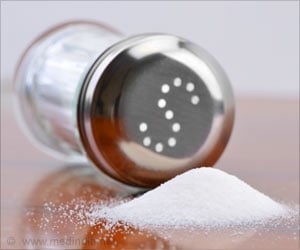Researchers at University of Bonn have found a new gene which might, if defect, contribute to the development of Type II diabetes
Chemists and biologists from the new interdisciplinary LIMES (Life and Medical Scientists) Center at University of Bonn have found a new gene which might, if defect, contribute to the development of Type II diabetes.
Flies in which this hereditary factor is defective are also significantly smaller than other members of their species and live appreciably longer. The gene seems to have such a crucial function that it has hardly changed in just under a billion years: it is found in flies, but in a similar form it is also found in mice and humans. In the current issue of the prestigious journal Nature the Bonn researchers have published two articles on this topic.Sometimes science resembles a relay race: in 1996 the biochemist Professor Waldemar Kolanus discovered a group of cellular proteins, the cytohesins, and described their function in the immune system. Two of his colleagues at the LIMES Centre in Bonn have now found a totally new and completely unexpected function of these proteins, which is very relevant to medicine. 'We wanted to know whether there were also cytohesins in the fruit fly drosophila and what functions they have there,' the evolutionary biologist Professor Michael Hoch reminisces. He and his team were in fact successful. They discovered a protein, which is very similar to the cytohesins in mammals. Even more interestingly, fruit flies in which the genetic blueprint for this gene is defective are smaller in size. So the researchers nicknamed cytohesin 'Titch'. 'The effect on the insect's growth showed us that 'Titch' could play a key role in the metabolism of insulin – a completely new role for cytohesins,' Professor Hoch says.
New drugs for diabetes The maximum size of plants or animals is written into their genes. Yet whether they exploit this potential is influenced by a number of other factors. One of them is insulin. Mammals produce increased amounts of this hormone after eating as a reaction to the increasing blood sugar level. Via a complicated sequence of reactions it ensures that muscles and other organs absorb blood sugar. What is more, however, the cascade of insulin signals also determines size and number of the body cells during growth. Apparently, 'Titch' plays a key role in this shower of signals. 'The fruit fly larvae increase their weight 200-fold in the first three days after hatching,' Michael Hoch explains. 'If their 'Titch gene' has mutated, they grow visibly more slowly.' A series of additional observations support the thesis that 'Titch' is extremely important for the metabolism of insulin in drosophila. If there were a cytohesin with a similar function in mammals, this would, for instance, be of great interest for research into diabetes.
In parallel to Michael Hoch's research, Professor Michael Famulok produced an active substance that inhibits cytohesins, known as SecinH3. 'We fed this inhibitor to mice,' he explains. Unlike fruit flies, the rodents do not have just one cytohesin at their disposal, they have four. Professor Famulok wanted to find out whether they play a similar crucial role in the insulin metabolism of mice as 'Titch' does in the fly and discovered the following: 'Liver cells of the animals treated with SecinH3 reacted to insulin not nearly as strongly as they should.' Medical people know this effect: this insulin resistance is regarded as a warning signal for the onset of Type II diabetes.
Six million people suffer from this type of diabetes in Germany alone. It is triggered by an unhealthy diet and lack of exercise, and the tendency is rising. Michael Famulok now thinks new drugs are on the cards. 'There is a class of switch molecules which are activated by cytohesins. This activation is apparently necessary to pass on the signals. If we manage to stimulate the switch molecules with a suitable active substance, we might possibly be able to thereby reverse the resistance to insulin.' A new method described by Michael Famulok in the Nature paper could help in the search for this kind of drug. With its help his team has already found the inhibitor SecinH3.
A long life thanks to a genetic defect" The joint ancestor of the fruit fly and the mouse lived at least 900 million years ago. Nevertheless, 'Titch' and the corresponding cytohesin in mice are so similar that SecinH3 is effective with both. 'We have fed the inhibitor to our fly larvae,' Michael Hoch explains. 'They then developed as if their 'Titch gene' were defective.' This hereditary factor also has a completely different effect, which really sets the researchers' imagination going. Flies, which have a ‘Titch’ defect, live a lot longer than others of their species. 'An exciting effect,' Michael Hoch thinks. 'We certainly must investigate this further.'
Advertisement
Source-Eurekalert
SRI











